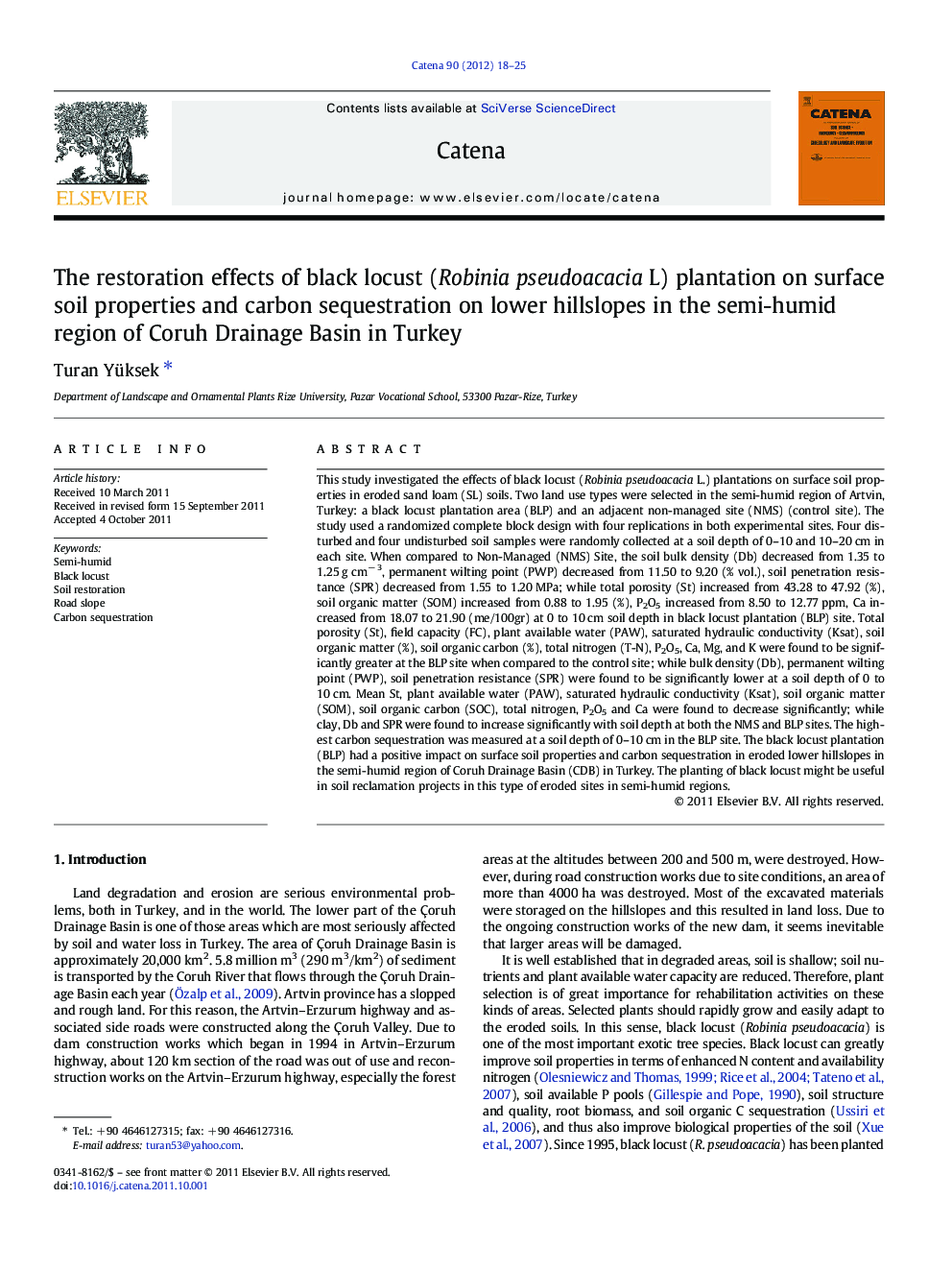| کد مقاله | کد نشریه | سال انتشار | مقاله انگلیسی | نسخه تمام متن |
|---|---|---|---|---|
| 4571911 | 1629262 | 2012 | 8 صفحه PDF | دانلود رایگان |

This study investigated the effects of black locust (Robinia pseudoacacia L.) plantations on surface soil properties in eroded sand loam (SL) soils. Two land use types were selected in the semi-humid region of Artvin, Turkey: a black locust plantation area (BLP) and an adjacent non-managed site (NMS) (control site). The study used a randomized complete block design with four replications in both experimental sites. Four disturbed and four undisturbed soil samples were randomly collected at a soil depth of 0–10 and 10–20 cm in each site. When compared to Non-Managed (NMS) Site, the soil bulk density (Db) decreased from 1.35 to 1.25 g cm− 3, permanent wilting point (PWP) decreased from 11.50 to 9.20 (% vol.), soil penetration resistance (SPR) decreased from 1.55 to 1.20 MPa; while total porosity (St) increased from 43.28 to 47.92 (%), soil organic matter (SOM) increased from 0.88 to 1.95 (%), P2O5 increased from 8.50 to 12.77 ppm, Ca increased from 18.07 to 21.90 (me/100gr) at 0 to 10 cm soil depth in black locust plantation (BLP) site. Total porosity (St), field capacity (FC), plant available water (PAW), saturated hydraulic conductivity (Ksat), soil organic matter (%), soil organic carbon (%), total nitrogen (T-N), P2O5, Ca, Mg, and K were found to be significantly greater at the BLP site when compared to the control site; while bulk density (Db), permanent wilting point (PWP), soil penetration resistance (SPR) were found to be significantly lower at a soil depth of 0 to 10 cm. Mean St, plant available water (PAW), saturated hydraulic conductivity (Ksat), soil organic matter (SOM), soil organic carbon (SOC), total nitrogen, P2O5 and Ca were found to decrease significantly; while clay, Db and SPR were found to increase significantly with soil depth at both the NMS and BLP sites. The highest carbon sequestration was measured at a soil depth of 0–10 cm in the BLP site. The black locust plantation (BLP) had a positive impact on surface soil properties and carbon sequestration in eroded lower hillslopes in the semi-humid region of Coruh Drainage Basin (CDB) in Turkey. The planting of black locust might be useful in soil reclamation projects in this type of eroded sites in semi-humid regions.
► Rehabilitation work with black locust in soil, PAW, SOM, T-N values increased; while the SPR, PWP and Db values decreased.
► Carbon sequestration content increased by 38% at the BLP site.
► The height of trees ranged between 2.7 and 6.1 m.
► Rehabilitation of degraded lower hillslope soils in semi-humid areas black locust plantations have been successful.
Journal: CATENA - Volume 90, March 2012, Pages 18–25